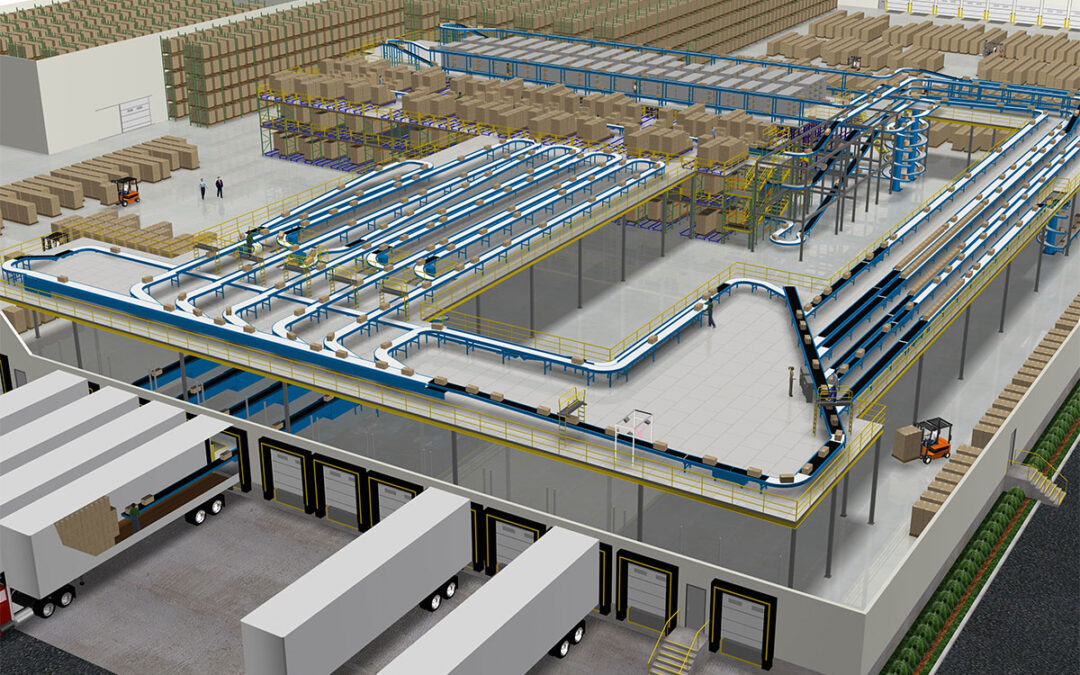Prior to the COVID pandemic, the shift to an automated supply chain already had been trending upward. However, when the pandemic hit — and created both a labor shortage and an e-commerce boom — the trend accelerated exponentially.
Along with other supply chain disruptions, these new market realities drove warehouses to look to automation to bridge the gaps in operations and improve productivity. Automation has fast become an invaluable option for warehousing, distribution, and fulfillment operations.
Industry experts expect this shift toward warehouse automation to continue unabated. According to estimates, the market is expected to grow by 1.5x by 2025 and to cross $37 billion by 2030.
For many businesses, the cost of investing in warehouse automation is offset by the enormous benefits that can be realized. Automation can provide solutions for labor shortages and safety, support lean management in eliminating waste, and optimize operating space and productivity.
Solving For Today’s Labor Challenges
Today, machine power is augmenting manpower to keep goods moving, workers happy, and costs down. One approach to automation is leveraging automated guided vehicles (AGVs) to reliably perform a variety of repetitive transportation and pallet handling tasks.
An AGV is a driverless transportation vehicle used in manufacturing facilities and distribution centers where tasks are repetitive and can be completed without human management. AGVs can decrease costs by greatly reducing operator expenses.
Myth: there is a misconception that automation is going to replace employees. That is simply not the case.
According to Jason Huedepohl, Director – Advanced Intralogistics at Shoppa’s Material Handling, (Shoppa’s) “Warehouse automation isn’t there to replace the need for human employees. It is there to replace the non-value added tasks that are repetitive and non-stimulating, this allows an organization to fill their labor shortage and reposition human employees to maximize the efficiency of the operation by taking over the more complex processes that require strategic thinking.”
In fact, Huedepohl notes that automation can lead to more engaged and productive employees. By freeing operators from repetitive, low-value tasks, Shoppa’s AGVs (such as the Center-Controlled Rider Automated Forklift) can create a more rewarding work environment, raising engagement and lowering turnover.
FACT: Automation can help increase the productivity of an existing workforce by as much as 46%.1
AGVs also improve safety. In 2020, there were approximately five workplace injuries for every 100 full-time workers in the warehouse/storage industry.2 “Warehousing and fulfillment involve a lot of moving pieces, often with the use of heavy machinery,” says Clo Dormeau, National Accounts Manager for Intralogistics Solutions at Shoppa’s. “Humans sometimes make mistakes due to distraction, exhaustion, negligence, etc. Automation is an effective means of reducing this rate of injury by removing the human element from the most dangerous of processes and allowing labor to be redirected to more productive activities.”
Supporting Lean Management
Automation is an important effective multiplier to the lean journey – one of the key tenants of any lean journey is eliminating Muda (uselessness; wastefulness). Automation is a good way to allow a machine to perform a non-value task in repetition with little to no engagement by humans, again allowing them to focus on the more complex tasks that require real-time decision making.
In fact, properly programmed equipment can produce parts within tight tolerances and can provide automatic alerts if the process veers toward upper or lower-tolerance limits. This eliminates Muda like scrap, rework and overproduction — three of the gravest sins of lean manufacturing.
Optimizing Operating Space and Productivity
The pandemic has accelerated structural trends already at work and reduced new supply, increasing the likelihood of a critical shortage of space. Automation can bridge this gap by improving productivity, enhancing capabilities, and opening up new locations for logistics users.
Last but not least, Huedepohl explains how automation can optimize and maximize operating space and productivity. “This is a benefit that people don’t always equate with warehouse automation. In reality, however, it’s one of the most significant advantages automation provides. Space is becoming a more constrained resource, especially in warehousing and distribution facilities packed with all kinds of goods. An ever-growing product mix can create an ongoing puzzle that becomes increasingly more difficult as you grow.” Implementing automation frees up valuable floor space, which makes room for even more product storage.
Ready to Get Started?
At Shoppa’s, our team of experts will work with you to craft the most efficient and intelligent plan for automating your warehouse, from our automated forklift trucks to your warehouse floor, and systems that meet your specific needs and space requirements.
We have experienced designers, engineers, project managers and installers who will work with you every step of the way to ensure an optimal outcome, from the initial consultation to the final implementation. To learn more, contact a Shoppa’s Material Handling expert today.
[1] Material Handling & Logistics, “Labor Shortage Hurts Logistics Industry,” September 2018.
[2] U.S. Bureau of Labor Statistics, 2021.


